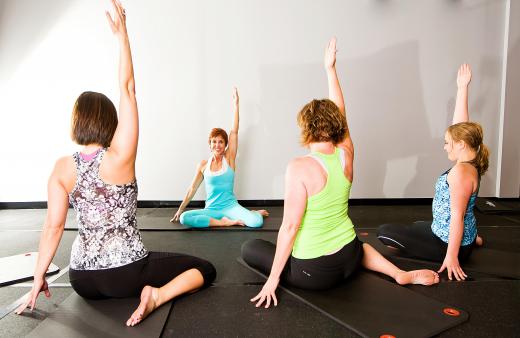The NIA technique, which formerly stood for neuromuscular integrative technique and now is better known as non-impact aerobics, is an exercise program developed in 1983, in Santa Rosa, California by Carlos and Debbie Rosas. In the early 1980s, as aerobics dance classes started to become popular, some people found the practice potentially too difficult to do. Pounding music and instructors inciting people to work hard could feel jarring to some, and injury was not uncommon especially with high impact work.
The Rosas’ sought to change this by putting together a more “gentle” program in the NIA technique that would integrate a number of fitness disciplines but still create a healthful, calorie-burning workout. Many disciplines are included in the NIA technique, but all include the idea that anyone taking a NIA class needs to stay firmly grounded in body awareness. Doing what feels natural and good, and modifying exercises as needed so that all fitness levels can participate helps people retain that body awareness, focusing less on pain and gain, and more on natural movement.

Disciplines utilized to create usually one-hour long NIA classes include yoga, tai chi, dance aerobics, modern dance, and martial arts. An instructor gently invokes people to move in different directions, often evoking nature metaphors to help people express movement in their own way. Music used is just as variable and eclectic. A number of different types may be present in a NIA technique class, including jazz, drumming traditions from Africa, contemporary music, and a variety of other types.

Though the Rosas’ NIA technique was at first only known to a few, interest in the program surged in the 1990s, and even more so in the 2000s. In addition to finding classes in your local area, the Rosas’ company now sells NIA workout tapes, collections of music, and even earrings. The company also demands certification for anyone who would teach NIA classes. There are both online and mentor courses that help people become practiced in this new aerobic tradition.

Any single NIA technique class can vary. Some focus most specifically on raising heart rate through a variety of movements that feel good. Others may hone in on stretching the body, or working a specific muscle group. Prices for classes range from $10-$20 US Dollars (USD), though if you belong to a gym that offers NIA technique classes, you may not need to pay any additional fees. Studios that offer these classes may give discounts if you purchase a series of classes.

Even though NIA is considered suitable for many fitness levels, it’s a good idea to check with a doctor before initiating a workout program, especially if it’s been a while since you’ve exercised. You should also let the instructor of the class know if you’re new to the NIA technique or if you have physical limitations. Instructors are usually very good at adapting modified movements for people new to this form of aerobic exercise, and will encourage you to listen and pay attention to how your body responds to each type of movement so that you don’t overdo it.
